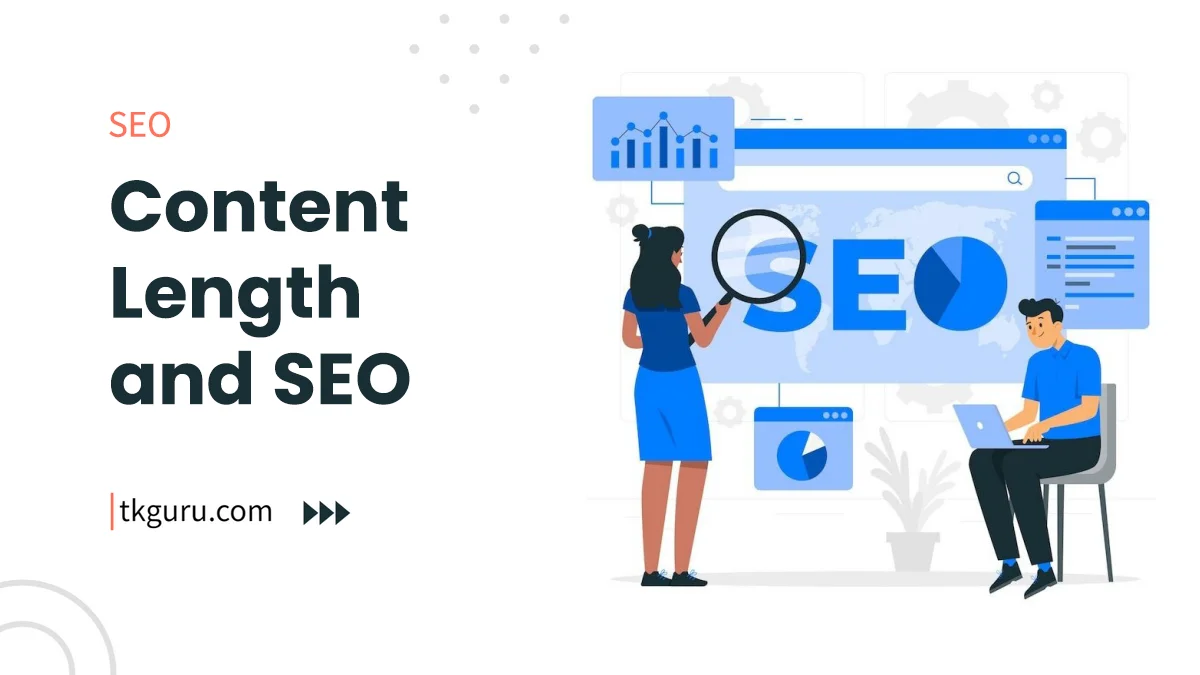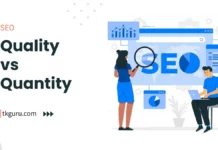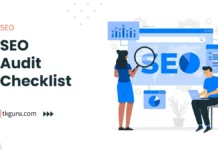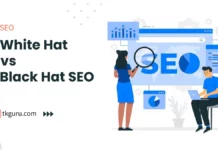Advertisements
Ratings

Content-Length and SEO – In the world of content creation and search engine optimization (SEO), the debate surrounding content-length rages on. Marketers and SEO experts often grapple with the question: Does size matter when it comes to content?
This article delves into the complex relationship between content-length and SEO, exploring the significance of quality over quantity and offering insights into how content-length impacts search engine ranking and user engagement.
Contents
- 1. The Significance of Content-Length in SEO
- 2. Quality vs. Quantity: Striking the Right Balance
- 3. Content-Length and Search Intent
- 4. Google’s Stance on Content-Length
- 5. Case Studies: Impact of Content-Length on SEO
- Conclusion: Tailoring Content-Length to User Intent
- 6. User Engagement and Bounce Rate
- Conclusion: Contextual Content-Length for SEO Success
- Content-Length and SEO FAQs
1. The Significance of Content-Length in SEO
A. The Evolution of SEO Practices
The landscape of SEO practices has evolved significantly over the years. Initially, longer content was seen as the go-to strategy for ranking higher in search engine results.
However, with the advent of Google’s algorithm updates, the focus shifted from word count to content relevance, quality, and user satisfaction.
B. The Content-Length Myth and Reality
While longer content can indeed provide more depth and information, it’s important to debunk the misconception that longer automatically means better.
Quality content that addresses user needs, provides value, and engages the audience holds more weight than mere word count.
Search engines have become more sophisticated in recognizing valuable content, making content-length just one factor in a complex equation.
2. Quality vs. Quantity: Striking the Right Balance
A. The Power of Comprehensive Content
Comprehensive, long-form content has its place in SEO. It allows for thorough coverage of complex topics, serving as authoritative resources that satisfy user intent.
Users seeking detailed analyses, guides, and tutorials are more likely to engage with and share in-depth content that provides valuable insights.
B. Concise Content and User Experience
In contrast, short-form content addresses users’ desire for quick answers. Many users prefer concise, immediate solutions to their queries.
When searching for straightforward information, users appreciate content that cuts to the chase and provides immediate value without unnecessary fluff.
3. Content-Length and Search Intent
A. Aligning Content with Search Intent
Content’s alignment with user search intent is crucial for successful SEO. Content should be tailored to meet different types of search intents—informational, navigational, and transactional.
Understanding user motives behind their queries helps create content that fulfills their needs effectively.
B. Long-Form Content for Exploratory Queries
Long-form content shines when users are exploring a topic in-depth. Users seeking comprehensive insights and in-depth analyses are likely to spend more time engaging with content that offers in-depth coverage and addresses multiple facets of a subject.
C. Short-Form Content for Quick Answers
For quick questions or immediate information needs, short-form content excels. Users looking for concise answers are more likely to engage with content that provides immediate solutions without requiring them to sift through lengthy content.
4. Google’s Stance on Content-Length
A. Quality Content as a Priority
Google’s algorithms prioritize content quality and user experience. Content that offers value, relevance, and a positive user experience takes precedence over sheer length.
Google acknowledges that content’s context and usefulness to users are more significant ranking factors.
B. The Value of Comprehensive Guides
While Google recognizes the value of long-form content, it emphasizes that content should provide a comprehensive overview of the topic and satisfy user needs.
Creating extensive guides that serve user intent and offer substantial insights enhances the chances of earning high-ranking positions.
5. Case Studies: Impact of Content-Length on SEO
To further explore the influence of content-length on SEO, let’s dive into two detailed case studies that highlight how different content approaches—long-form and short-form—can yield distinct results in search visibility, user engagement, and overall website performance.
Case Study 1: The Power of Comprehensive Long-Form Content
Objective: To demonstrate how an extensive, long-form guide can enhance search visibility and establish authority within a niche.
Client: Health & Fitness Blog
Content: “Ultimate Guide to Building Muscle: From Workouts to Nutrition”
Content-Length: Approximately 3,500 words
Strategy and Implementation:
The Health & Fitness Blog recognized that many users were seeking a comprehensive guide to building muscle.
The content team set out to create an all-encompassing resource that covered every aspect of muscle building, including workouts, nutrition, recovery, and supplements.
- Thorough Research: Extensive research was conducted to ensure the guide provided accurate, up-to-date, and authoritative information. The team consulted reputable sources, scientific studies, and fitness experts.
- In-Depth Coverage: The guide was structured with clear subheadings for each section. Workouts were explained step by step, nutritional recommendations were detailed, and the importance of recovery and supplements were highlighted.
- Visual Enhancements: High-quality images and infographics were included to visually illustrate exercises, nutritional concepts, and recovery techniques.
Results:
- Search Visibility: The comprehensive guide quickly gained visibility in search results for various muscle-building-related keywords. It secured top positions for terms like “best muscle-building workouts,” “nutrition for muscle gain,” and more.
- User Engagement: Users spent an average of 7 minutes on the guide, indicating high engagement and thorough reading. The inclusion of detailed information and practical tips kept users engaged throughout the lengthy content.
- Backlink Acquisition: The guide’s comprehensive nature attracted backlinks from reputable fitness websites and forums. Other websites referenced the guide as an authoritative resource, further enhancing the Health & Fitness Blog’s credibility.
Case Study 2: The Efficiency of Quick and Informative Content
Objective: To showcase how short-form content can provide immediate answers to user queries and drive targeted organic traffic.
Client: Cooking Blog
Content: “10 Quick and Delicious Weeknight Dinner Ideas”
Content-Length: Approximately 600 words per recipe
Strategy and Implementation:
The Cooking Blog recognized that users often search for quick dinner ideas during busy weekdays. The content team aimed to create a series of short-form articles, each presenting a simple and delicious weeknight dinner recipe.
- Concise Recipes: Each recipe article was structured with a brief introduction, a list of ingredients, easy-to-follow instructions, and a final presentation photo.
- User-Centric Approach: The recipes were designed to cater to users seeking immediate solutions. The language was straightforward, and the content focused on providing value without unnecessary details.
- Engaging Visuals: High-quality images showcased the final dishes, enticing users to try out the recipes.
Results:
- Targeted Organic Traffic: The short-form recipe articles quickly gained organic traffic from users searching for specific dinner ideas. Each article captured users seeking quick solutions to their weeknight meal predicaments.
- User Engagement: Despite the articles’ brevity, users engaged with the content by following the recipes and attempting to recreate the dishes. The simple and actionable nature of the content encouraged immediate action.
- Social Sharing: The visually appealing recipe photos were widely shared on social media platforms, driving additional traffic and engagement to the Cooking Blog’s website.
Conclusion: Tailoring Content-Length to User Intent
These case studies emphasize the importance of tailoring content-length to user intent. In the case of the Health & Fitness Blog, the comprehensive long-form guide proved successful in establishing authority, engaging users, and acquiring valuable backlinks.
On the other hand, the Cooking Blog’s short-form recipe articles efficiently addressed user queries, attracted targeted traffic, and facilitated social sharing.
Content creators should consider the purpose of their content and the needs of their target audience when determining content-length.
Long-form content offers in-depth exploration and authority, while short-form content provides quick solutions and immediate engagement.
Ultimately, content-length should serve user intent, answer questions effectively, and enhance user experience, contributing to overall SEO success.
6. User Engagement and Bounce Rate
A. Content-Length and Dwell Time
Longer content often leads to increased dwell time, as users spend more time engaged with comprehensive resources.
Quality long-form content keeps users on the page longer, reducing bounce rates and signaling to search engines that the content is valuable and relevant.
B. The Bounce Rate Challenge
Balancing content length to prevent overwhelming users is essential. While long-form content can engage users, poorly structured content can have the opposite effect.
Clear formatting, subheadings, and relevant visuals are crucial for keeping users engaged and ensuring that content length enhances, rather than hinders, user experience.
Conclusion: Contextual Content-Length for SEO Success
The question of whether content-length matters in SEO boils down to a matter of context and user intent.
Quality trumps quantity, and while long-form content can provide comprehensive insights, concise content serves specific user needs.
Striking the right balance between comprehensive guides and quick answers is key. Remember that content-length is just one of several factors that contribute to SEO success.
By prioritizing relevance, value, and user experience, you can create content that ranks well, engages users, and satisfies search intent—regardless of whether it’s long or short.
Content-Length and SEO FAQs
Does content length matter for SEO?
Yes, content length can impact SEO. While there's no fixed rule, longer and comprehensive content often performs better.
It provides more opportunities to include relevant keywords, answer user queries thoroughly, and establish authority in your field.
How does content length affect user engagement?
Longer content has the potential to engage users more deeply. Well-written, in-depth articles can keep visitors on your page longer, increase their time on site, and encourage them to explore related content.
Is longer content always better for SEO?
Not necessarily. Content should prioritize quality and relevance over length. Avoid unnecessary fluff or repetition.
If you can deliver value and answer user queries effectively in a shorter format, that can also be beneficial.
What's the ideal content length for blog posts or articles?
There's no one-size-fits-all answer, but studies suggest that longer articles (around 1,500 to 2,500 words) tend to perform well in terms of SEO and user engagement.
However, focus on meeting user needs rather than hitting a specific word count.
Can shorter content rank well in search results?
Yes, shorter content can rank well if it's well-optimized and relevant to the search intent. Some queries require concise answers, and Google aims to provide the most helpful results regardless of length.
In summary, content length is a factor to consider, but quality, relevance, and meeting user needs should be your primary focus.
Whether your content is short or long, ensure it provides value, addresses user intent, and offers a positive experience for both readers and search engines.
| Web Hosting | Website |
| WordPress | Google Adsense |
| SEO | Affiliate Marketing |
| Blogging | YouTube |
Recent Posts
- Top 6 SEO Companies in Ahmedabad 2024: Unlock Success with the Top SEO Companies in Ahmedabad
- Top 5 SEO Companies in Kanpur 2024: Discover the Top-Rated SEO Companies in Kanpur
- Quality vs Quantity: The Importance of High-Quality Backlinks
- E-A-T and SEO: Expertise, Authoritativeness, Trustworthiness
Related Tags
how many words should a web page have for seo, content length for seo, long-form content seo, what does ctr in seo signifies?, what is the word limit for long form pieces that rank higher on the first serp?, __________________ traffic refers to the visitors that come to your website from unpaid sources., content length minus 1, what’s the ideal length for content on a web page?






